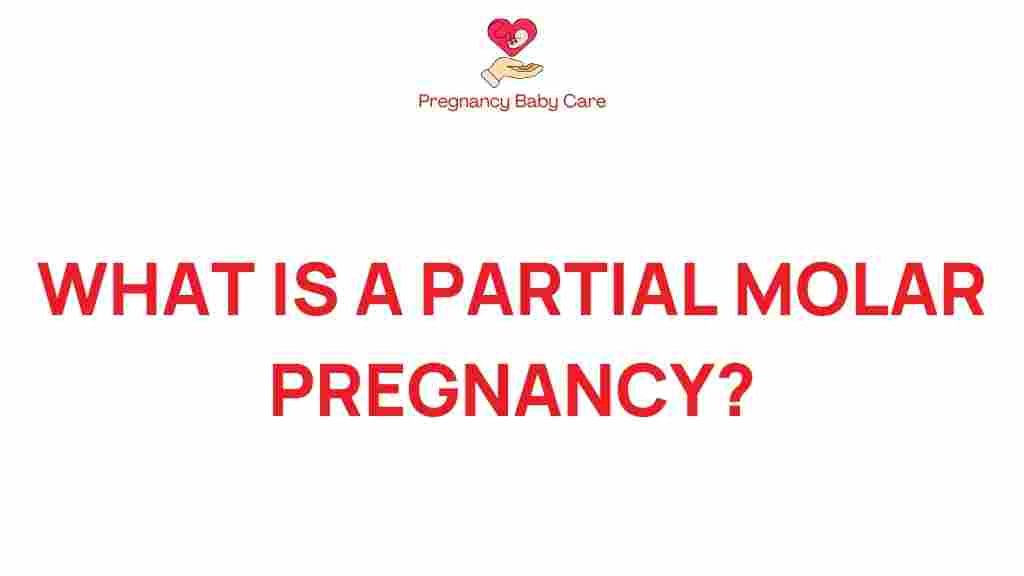Unraveling the Mystery of Partial Molar Pregnancy
Pregnancy is a time filled with anticipation and joy, but it can also bring about unexpected challenges. One such challenge is a partial molar pregnancy, a specific type of gestational trophoblastic disease that can lead to serious pregnancy complications. Understanding the nuances of this condition is essential for prenatal health, reproductive health, and maternal care. In this comprehensive guide, we’ll explore the details surrounding partial molar pregnancies, helping you to navigate this complex topic with confidence.
What is a Partial Molar Pregnancy?
A partial molar pregnancy occurs when there is an abnormal fertilization of an egg, leading to an embryo that has both normal and abnormal cells. This condition is categorized under gestational trophoblastic disease (GTD), which encompasses a range of conditions involving abnormal growth of cells inside the uterus. Here’s a breakdown of how it occurs:
- When a sperm fertilizes an egg, it typically contributes one set of chromosomes from the father and one from the mother.
- In a partial molar pregnancy, two sperm fertilize one egg, resulting in an embryo with an abnormal number of chromosomes, often triploid (69 chromosomes).
- This abnormal embryo can develop some placental tissue, but it cannot lead to a viable pregnancy.
Types of Molar Pregnancies
There are two main types of molar pregnancies:
- Complete Molar Pregnancy: This occurs when an egg with no genetic information is fertilized by a sperm, leading to a placental tissue that grows but lacks a viable embryo.
- Partial Molar Pregnancy: As previously described, this involves an abnormal embryo with some normal and some abnormal cells.
Signs and Symptoms of Partial Molar Pregnancy
Recognizing the signs of a partial molar pregnancy is crucial for timely medical intervention. Symptoms may include:
- Vaginal bleeding during the first trimester
- Severe nausea and vomiting (hyperemesis gravidarum)
- Rapidly enlarging uterus
- High blood pressure
- Pelvic pain or pressure
If you experience any of these symptoms, it’s essential to consult a healthcare provider immediately for appropriate evaluation and care.
Diagnosis of Partial Molar Pregnancy
Diagnosing a partial molar pregnancy involves several steps:
- Ultrasound Examination: A transvaginal ultrasound can reveal an abnormal growth pattern in the uterus and help identify the presence of molar tissue.
- Blood Tests: Measuring levels of human chorionic gonadotropin (hCG) is critical. In molar pregnancies, hCG levels are typically much higher than in normal pregnancies.
- Pathological Examination: After a miscarriage or surgical removal of the molar tissue, a pathologist will examine the tissue to confirm if it is a partial or complete mole.
Management and Treatment Options
Once diagnosed with a partial molar pregnancy, management focuses on ensuring the health and safety of the mother. Treatment options include:
- Surgical Evacuation: This is the primary treatment for a partial molar pregnancy, involving a dilation and curettage (D&C) procedure to remove the molar tissue.
- Monitoring hCG Levels: After surgery, regular blood tests to monitor hCG levels are necessary to ensure all molar tissue has been removed and to check for any signs of persistent gestational trophoblastic disease.
- Follow-Up Care: Continuing care with a healthcare provider is essential for monitoring recovery and reproductive health.
Potential Complications
While a partial molar pregnancy can be managed effectively, there are potential complications to be aware of:
- Persistent Gestational Trophoblastic Disease: In some cases, molar tissue can remain in the uterus and continue to grow, requiring further treatment.
- Choriocarcinoma: A rare but aggressive cancer that can develop from molar tissue if not properly managed.
- Psychological Impact: Experiencing a molar pregnancy can be emotionally challenging, necessitating support for mental health during recovery.
Emotional and Psychological Considerations
Facing a partial molar pregnancy can be an emotionally taxing experience. Here are some tips for managing your mental well-being:
- Seek Support: Whether through friends, family, or support groups, talking about your experience can help.
- Consider Counseling: Professional counseling can provide a safe space to process feelings of grief, loss, and confusion.
- Educate Yourself: Knowledge about the condition can empower you and help alleviate fears.
Future Pregnancies After a Partial Molar Pregnancy
After experiencing a partial molar pregnancy, many women wonder about their chances of future pregnancies. Here are some important considerations:
- Consult Your Doctor: Before trying to conceive again, it’s crucial to have a thorough discussion with your healthcare provider about your health status.
- Wait for Confirmation: Most doctors recommend waiting at least six months before attempting to conceive again to ensure that hCG levels return to normal.
- Monitoring in Future Pregnancies: Subsequent pregnancies may require close monitoring for any signs of complications.
Preventing Partial Molar Pregnancies
While there is no guaranteed way to prevent a partial molar pregnancy, understanding risk factors can help:
- Age: Women over the age of 35 have a higher risk of developing molar pregnancies.
- Previous Molar Pregnancies: A history of molar pregnancy increases the likelihood of experiencing another.
- Nutrition: Some studies suggest that a diet lacking in certain nutrients may increase risk.
Conclusion
Understanding a partial molar pregnancy is vital for anyone navigating the complexities of reproductive health. While the diagnosis can be daunting, timely medical intervention and emotional support can lead to effective management and recovery. Remember, if you have concerns about your pregnancy or reproductive health, consult a healthcare professional for personalized guidance.
For more information on pregnancy complications and maternal care, you can check this resource. Additionally, exploring community support through local groups can also provide valuable assistance during this challenging time.
Taking charge of your prenatal health involves staying informed and proactive. By understanding the risks, symptoms, and management options associated with partial molar pregnancies, you can pave the way for a healthier future in your reproductive journey.
This article is in the category Pregnancy and created by PregnancyBabyCare Team
